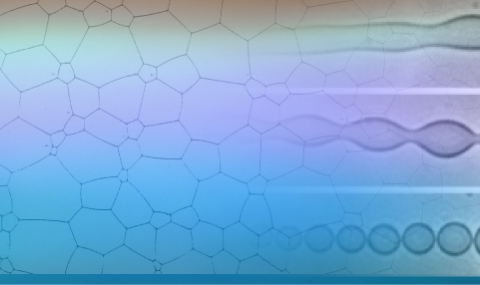Genomes of living organisms are comprised of very long DNA molecules. A fundamental question is by what mechanisms are specific loci along these genomes found, with high efficiency and at relevant physiological times. We address this question in the case of horizontal gene transfer processes such as viral transduction and conjugation, which result in the rapid acquisition of new traits in bacteria. We use the infection of E. coli cells by bacteriophage lambda, whose DNA integrates at a unique site into the bacterial genome, when following the lysogenic pathway. To shed light on the mechanisms by which lambda DNA finds its unique integration site, we follow in real time individual lambda DNAs and their integration site within live cells using fluorescent markers, until lysogeny is established, revealing the dynamics of the search process.

The Frontier between Physics and Biology

